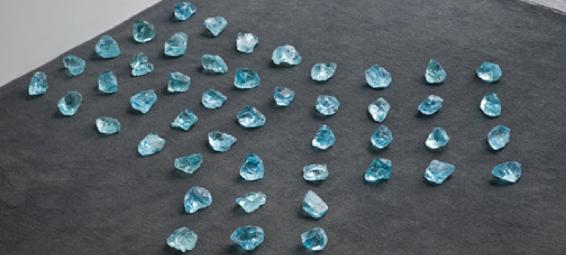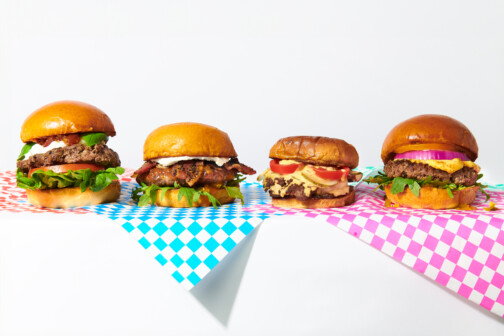Taking architecture as a starting point, Christina Rees and Thomas Fuelmer have curated a stunning show of work from a Dallas collection that is usually seen in the sleek white confines of a home designed by Richard Meier. The exhibition, entitled Floor Corner Wall: Selected Work from the Rachofsky Collection at Fort Worth Contemporary Arts includes sculpture by Carl Andre, Mel Bochner, Tom Claassen, Tom Friedman, Jim Hodges, Siobhan Liddell, Giullio Paolini, Charles Ray, Richard Serra, and Rachel Whiteread. But by virtue of their combination, both the architecture and sculpture have been redefined.
Some artists in this exhibition like Carl Andre, Richard Serra or Mel Bochner were part of a vanguard of artists in the 1960’s that redefined sculpture’s relationship to space. They stripped away the pedestal, allowing the formal and conceptual structures of the work itself to prop them up. Serra’s Clothes Pin Prop, 1969-76 takes this quite literally as two pieces of heavy lead are held up by nothing more than the floor and wall of the gallery and the resultant pressures of mass and gravity.
Bochner’s Theorem of Pythagoras, 1972/2006, made up of three sets of blue glass fragments on the floor, is divided in relation to the famous mathematical theorem. One set is laid out in a square with five pieces in either direction. The second set is four by four and the third set is three by three, for a total of forty-seven nodules that look like uncut gems, creating a triangle at the center of these three squares. This kind of measurement, which links physical form and the abstractions of mathematics acts as a bridge between sculpture and architecture.
Other artists engage the architecture in a way that is more playful. Reflecting Another, 2000 by Jim Hodges is made up of four panels of mismatched colorful light bulbs, two on each wall of a corner, that face each other. Given as a wedding gift to Cindy and Howard Rachofsky, the purple bulbs are a stand in for Howard and the blue for Cindy. As they meet their colors unify to a shining band of silver. Across the room, Sioban Liddell’s Untitled (light strips), 1995, offers a subtle echo to the Hodges piece with two strips of white paper whose brightly colored backs reflect off of the wall.
Sharing the back room with the Lidell are two small pieces that are equally restrained in their subversion. Tom Friedman’s Untitled, 1990, a ball of bubblegum measuring about 5 inches in diameter and chewed completely by the artist sits in another corner high above Rachel Whiteread’s 2002 aluminum casting of her studio floor like a beautifully bizarre icon. Barely visible, Charles Ray’s Rotating Circle, 1988 is a motorized nine-inch white circle inset in a white wall that spins so fast that it would shave off the skin of any finger that touches it.
All of this work looks strikingly different in a quasi-industrial white cube than its usual setting in Meyer’s neo-modernist purity. The stains and cracks on the floor are more like the spaces that these objects were originally conceived in and as a result the work looks very much at home. In this sense, the work engages not only the floors, corners and walls of the gallery’s architectural space. It also reframes the historical trajectories of architectural relationships between studios, galleries and museums.
I have seen many of these pieces in both spaces and they look great in both. But it’s nice to see that beyond the obvious possibility that architecture can provide a framework and context for sculpture, sculpture can also reframe, affect and even subvert the architecture that it inhabits.






